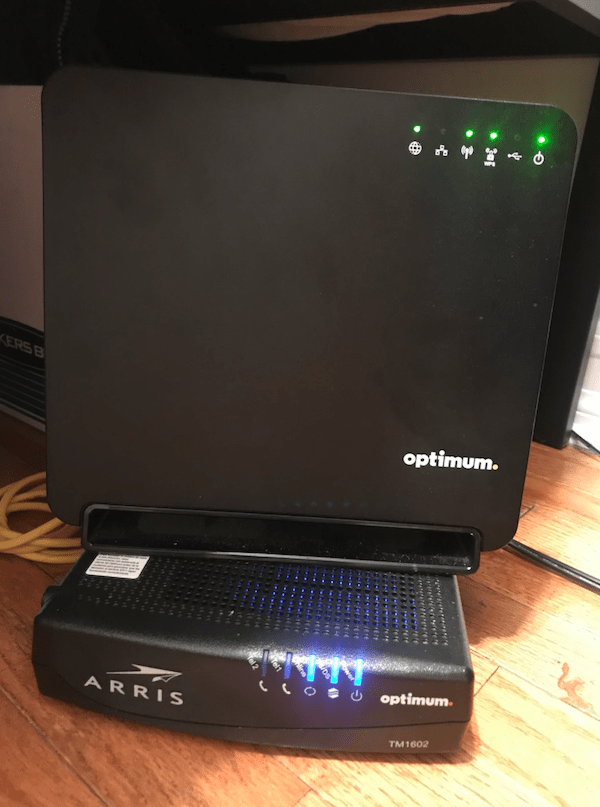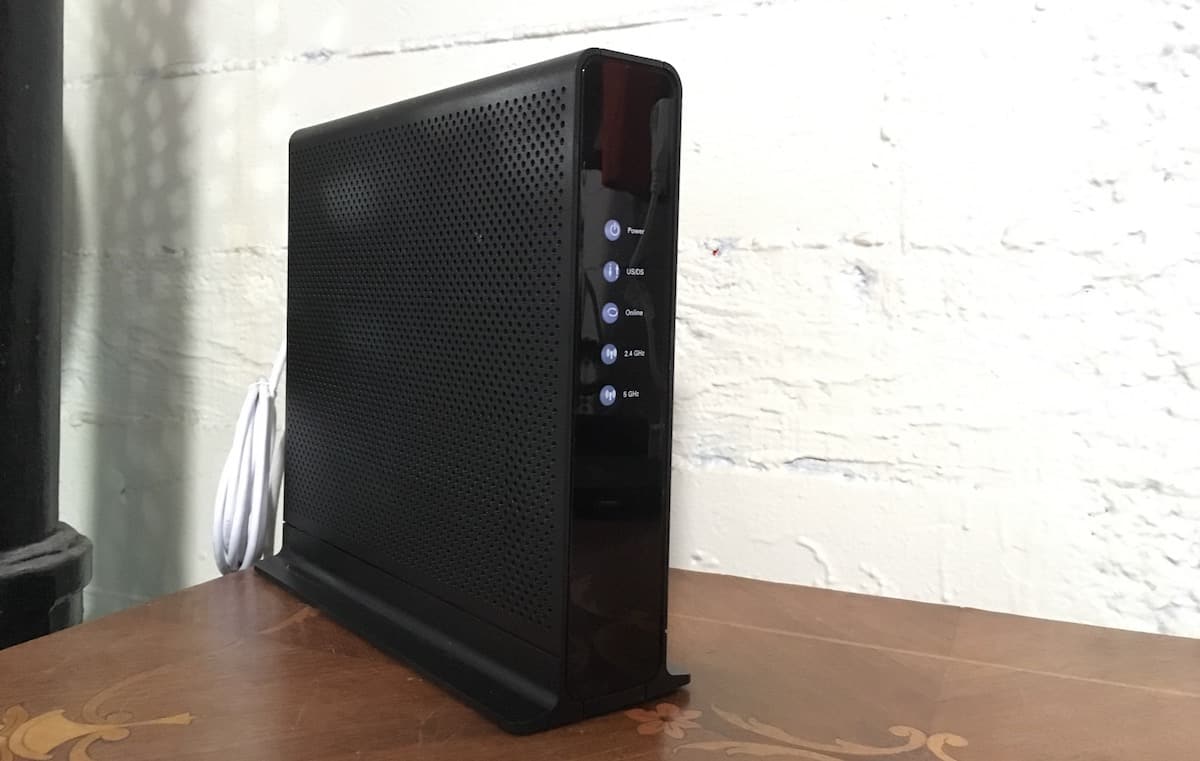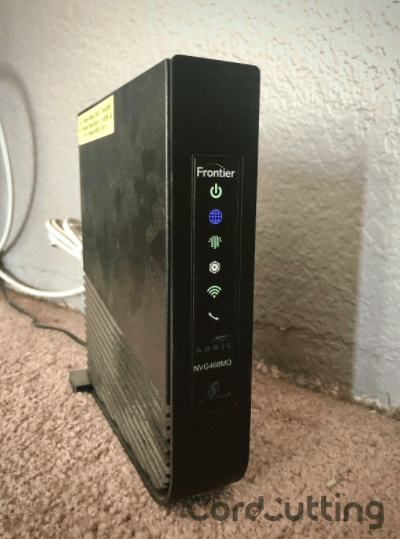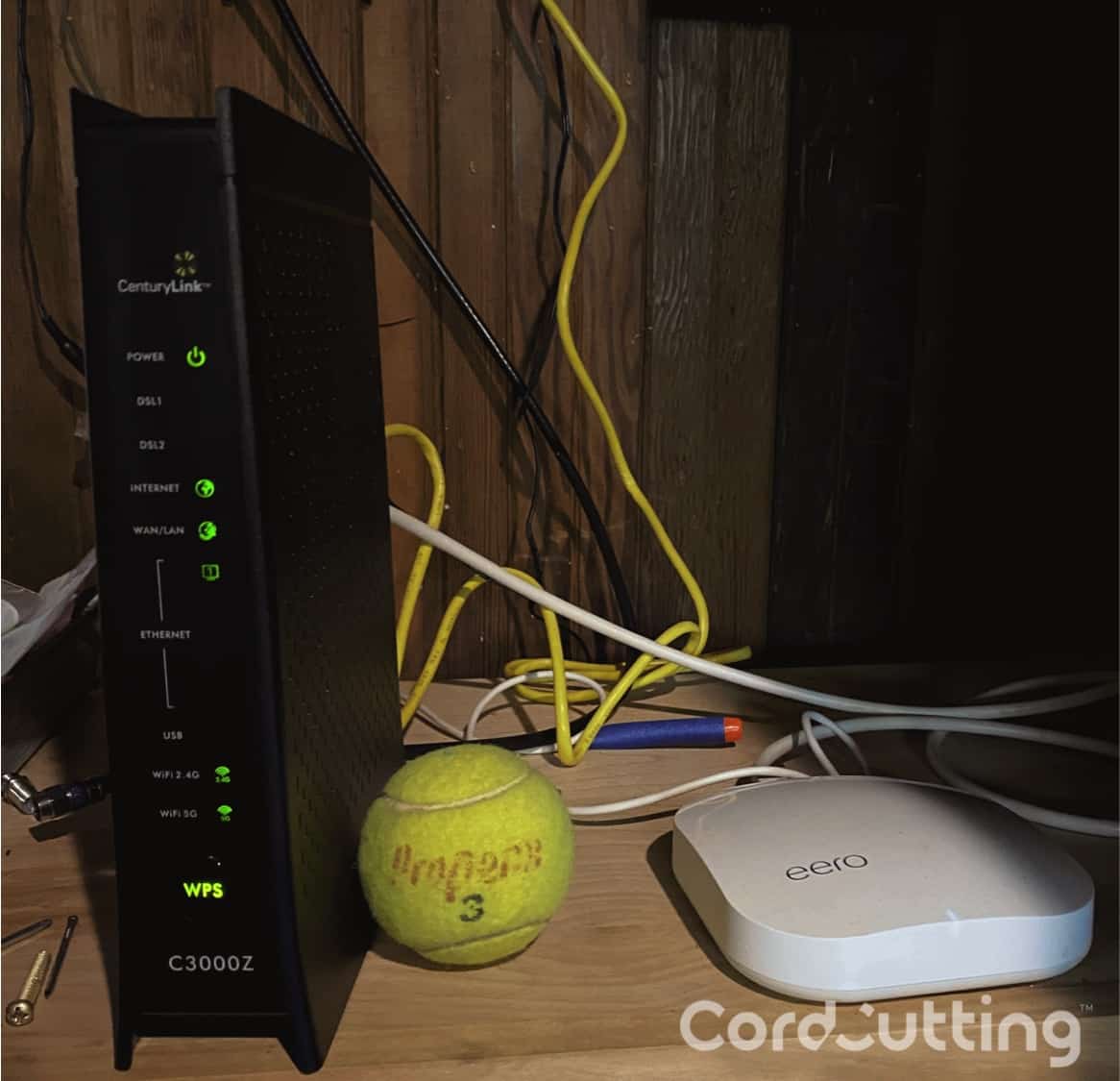Modems and routers are both essential to your home internet experience, but what’s the difference between a modem and a router? What exactly does each do? Are they always separate devices?
Understanding modems and routers can be a big help when you encounter internet issues. When your Wi-Fi isn’t working properly or your internet is slow, your router or modem is often at fault. You can learn to solve your home network issues, but first you need to understand the equipment involved — particularly your modem and router. Luckily, it isn’t too complicated.

What Is a Modem?
Your modem connects your computer (or network of computers) to the internet. Computers don’t know how to “talk” directly to the internet, and it would be impractical to require every computer to have the ports and understanding to communicate with every type of internet service (DSL, cable, fiber, etc.).
Modems act as translators, converting signals from the internet into a language any computer can understand. There are multiple types of internet modems, each built for a specific type of internet service.
Types of Modems
- Cable
- Digital subscriber line (DSL)
- Dial-up
- Satellite
When your internet provider sets up your service, they’ll provide a modem if you don’t already have one. You could use that device forever, but there are reasons to buy your own modem. In particular, internet providers charge a rental fee for their modems, which quickly adds up to more than the cost of your own modem.
If you buy your own modem, make sure to get one made for the type of internet service you use.

What Is a Router?
Your router connects all your devices (computers, phones, streaming devices) together, creating your home network. Routers provide multiple ethernet ports for wired connections and produce a Wi-Fi network for wireless connections.
Routers play an important role in your connection to the internet. Modems know how to talk to the internet, but they can do it for only one device at a time. Routers act as sorting facilities, giving the modem a single point of contact with your home network. When the modem receives a packet of information from the internet, it sends it to the router, which distributes it to the appropriate computer in your network. This happens quickly enough that you can actually use more than one internet-connected device at a time. If you had a modem but no router, you wouldn’t be able to.
Your internet provider probably gave you a router when they installed your internet service. As with modems, internet providers typically charge a rental fee for using their routers. All routers work with every type of internet service, so you can readily buy a better router if you choose to.
Routers can work with just cables, but modern routers also create a network out of thin air: your Wi-Fi network. Your Wi-Fi is run by your router, not your modem — but it needs your modem’s help to connect to the internet.
You need a modem to connect to the internet, as well as a router to use more than one internet-connected device at a time. If you can do all that but your internet provider gave you only one device rather than two, then you’re probably working with a combination modem and router, which basically means it’s both devices in one plastic box.
How Routers and Modems Work Together
Your local network (including your Wi-Fi) and the internet are very different things. Your local network is like a little gated community — private and secure. This is the part your router runs. This little neighborhood connects your devices to each other through your router, which is how you can print to your wireless printer from your laptop, for example, even if you aren’t connected to the internet.
The way your router connects to your modem is a bit like the exit at a gated community. Through that gate, you can reach roads and highways beyond your private neighborhood — the internet!

Do You Need a Router and a Modem?
You will always need a modem to connect your computer to your home internet connection. You could get by without a router, but it would severely limit the abilities of your network, which is why almost nobody does it.
Let’s imagine life with a modem but no router: Without a router, you would not have a Wi-Fi network, so you would need to connect each of your computers to the modem with an ethernet cable. That would limit you to a single device online at a time, and it would have to be located near your modem. Phones and some streaming devices don’t have ethernet ports, so you wouldn’t be able to get internet access on these devices at all.

Modem and Router Combos
If your internet provider gave you only one device, it’s probably a combination modem and router — also known as a “wireless gateway.” A gateway takes on all the functionality of both a modem and a router. If you prefer to have a separate router, most gateways allow you to turn off their router functionality and have them operate solely as modems.
The main advantage of a gateway device is convenience. It’s one device instead of two, which means fewer cables to deal with, only one electrical outlet taken up, and only one device to debug when things go wrong.
A combined device, however, means you’ll have to replace the entire thing if either the modem or router stops working or requires upgrading. Modems rarely need to be replaced unless they break or you change internet services, but you may want a new router every few years to keep up with advances in security and Wi-Fi speed.
How to Tell Your Router From Your Modem
Unless you have a modem-and-router combo, two devices are sitting between your computer and the internet. They probably look remarkably similar — each is a box with a line of connection ports and a row of flashing lights. There’s a good chance they’re both rectangular and black. So how do you tell which one is your router and which one is your modem?
What Does a Modem Look Like?
Most stand-alone modems have only two ports. One is an ethernet port that can connect to the router or a single computer, and the other connects to your internet service, generally through a phone or cable line. Unlike routers, modems typically do not have any antennae.
The easiest way to tell which device is your modem is its connection to your internet service. Depending on what type of internet you have, your modem will connect either to your home phone lines through a phone cord or to cable lines using a coaxial cable (the round one with a wire in the center). Just trace the cable from the wall to the first device it connects to, and you’ll find your modem.
What Does a Router Look Like?
Routers typically have at least three ethernet ports, and many have five or more. Most routers will have at least one external antenna, which is used to generate a Wi-Fi network.
As with your modem, the easiest way to identify your router is based on its connections. Follow the ethernet cable from your modem, and you’ll find the router on the other end. If you see a connection to the wall or if a phone cable or coaxial cable is coming from your device instead of ethernet, you are probably looking at the modem and not the router.
Routers can also be identified by the information on their stickers. Both your modem and router probably have a sticker with their make, model, and serial number, but the router’s sticker will also have its IP address, default log-in credentials, and security type.
More Than a Black Box
Modems and routers are more than just the black boxes in the corner of your home — they are crucial parts of how the internet works. If you want to learn to fix internet problems or secure your home network, it all starts with understanding your modem and router and the differences between them.
Here’s a simple way to take advantage of your newfound networking knowledge: If you’ve never logged in to your router, then this would be a good time to change your Wi-Fi password for added security. While you’re at it, you can even create a QR code to make sharing your Wi-Fi password easier than ever!